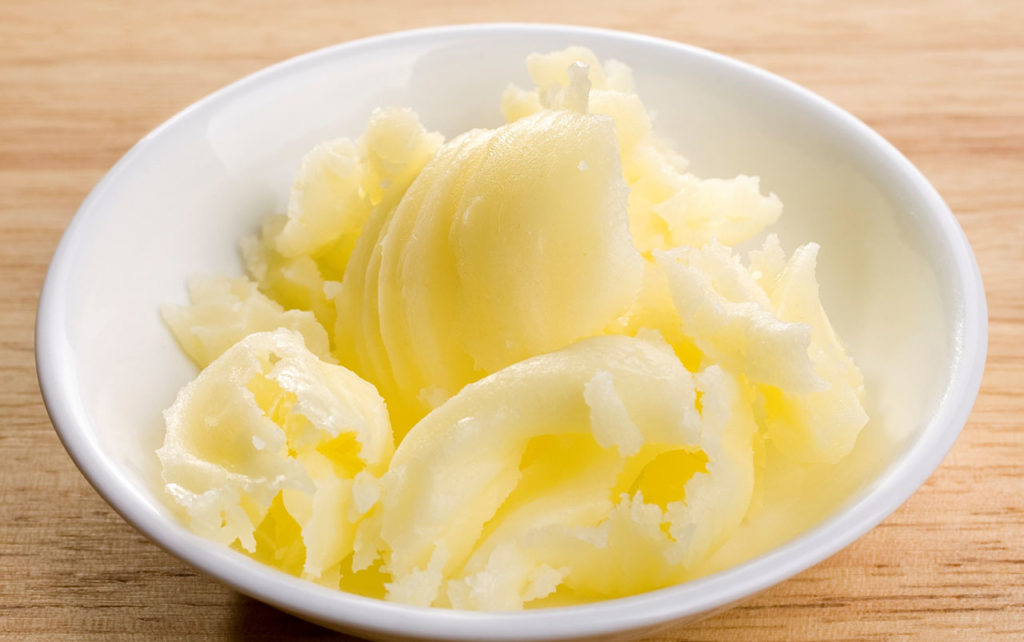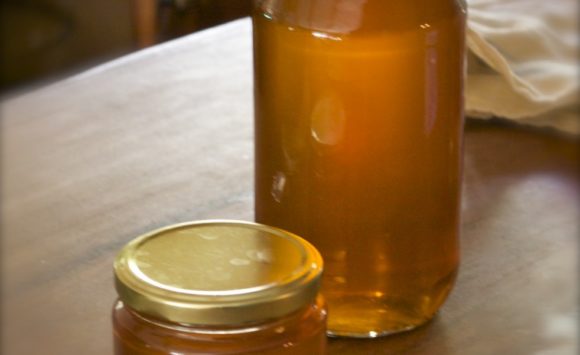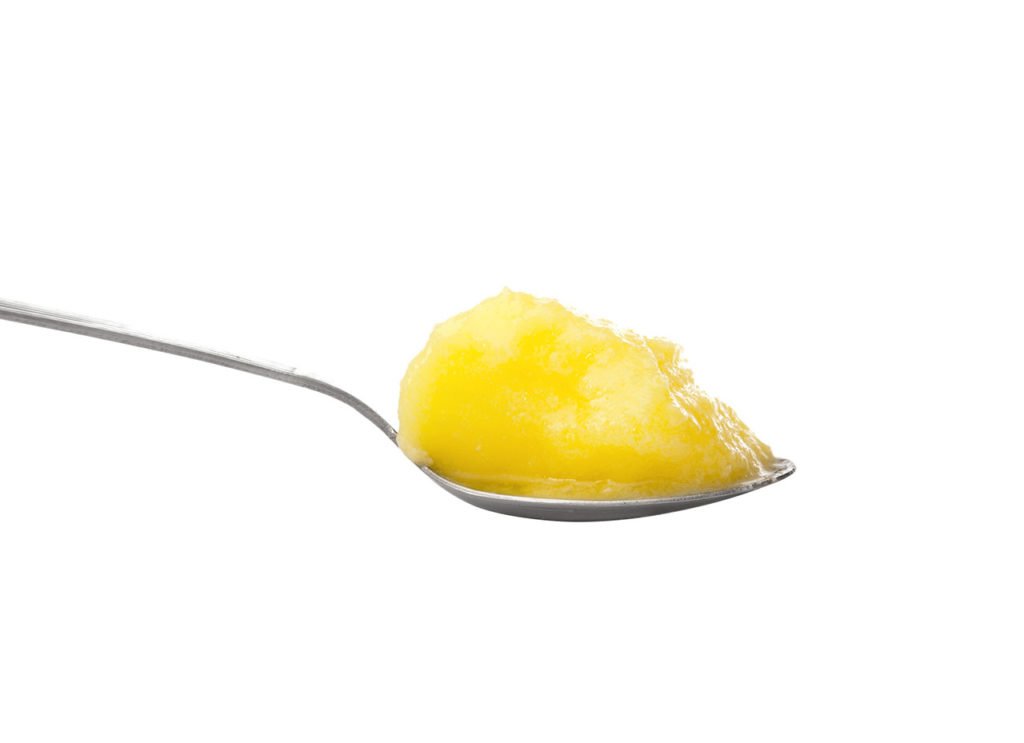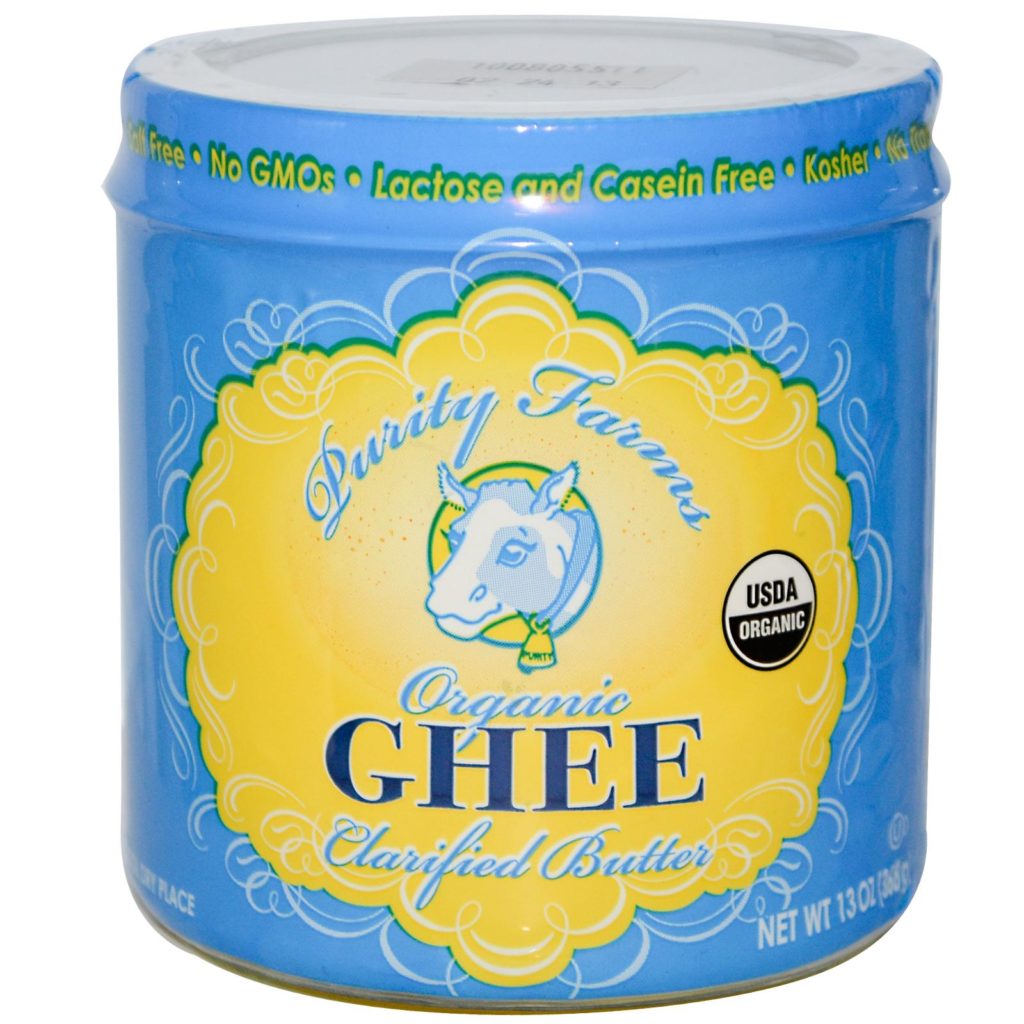
Ghee or clarified butter, in the past found mainly in many Indian dishes, is now becoming a favorite ingredient not only for Ayurveda cooks, but also main stream chefs and nutritionists as they experience the qualities it brings to their dishes. Ghee is made from butter, but its milk solids and salts have been removed which then makes it a pure “oil”. This oil can be brought to high temperatures without burning. (An important factor in the kitchen and possibly why many French cooks use it in their sauces). When ghee melts it is clear and has a beautiful yellow color as well as a faint nutty smell, a little like popcorn. That quality only enhances the richness and flavor of everything that contains it.

Ghee can also be used instead of butter. In fact I use it much more often than I use butter. It becomes solidified at lower temperatures, so in most cases does not need to be refrigerated. Ghee does need to be stored in a glass container with a tight lid. When removing from the jar, be careful to not contaminate and ruin it with other food products that may be present on a knife or spoon.
Ghee has a wonderful rich taste, but it also contains amazing healing properties. First, it is tridoshic, meaning all 3 constitutions (Vata, Pitta and Kapha) benefit from its qualities of a sweet rasa (taste), cooling vīrya (the effects of ghee on metabolism) and sweet vipāka (post-digestive effect). It should be noted that the Kapha constitution needs to use sparingly, as ghee has kapha qualities and may cause imbalance.

Ghee is also used in Ayurveda for medicinal purposes. It is considered a prabhāva, which means that its dynamic, electo-magnetic action, or its ability to heal, cannot be explained by the logic of rasa, virya, or vipāka. Considering Dr. Frawley’s quote, which reflects the idea that the “essences” of all the grasses in the world have come through the cow, then through the milk, then through the butter and then finally refined into ghee, I think is such a beautiful way to explain that “nature heals nature”.

Because of its potent healing qualities you don’t need much. Dr. Lad states in his book Textbook of Ayurveda General Principles of Management and Treatment that if one teaspoon or less is eaten per meal, ghee can actually help to increase HDL, the good cholesterol. Some additional reasons to use ghee when preparing your food are:
- Digestion (helps absorb and assimilate nutrients)
- Improves memory
- Helps increase flexibility by lubricating the connective tissues
- Carries the medicinal properties of herbs into tissues (yogavāhi)
- Stimulates the liver to produce fat soluble vitamins A, D, E, and K
You will find ghee the base of many herbal ointments for skin problems such as rashes and burns. While attending Ayurveda School, I was lucky enough to get to help make a ghee face cream using ghee and water in a copper bowl. It took the entire class several hours to complete this project of “washing” the ghee. The procedure included mixing ice water with ghee in a copper bowl (no bacteria can grow in a copper bowl). We each took turns stirring the mixture with our hands, and then filtering it through cheese cloth to only start the sequence again with the next student. We did this over one hundred times. The ghee face cream was the consistency of thick, whipped cream. It was an incredible experience and so much fun, especially having ghee all over our hands when we were done. We didn’t want to wash it off and waste it so we just kept rubbing more and more of it on our faces, arms and legs. We each were given a small container that was like owning gold, at least for me, and I used it over the next few months. I have used ghee for many things since then. I even use ghee in my eyes to moisten the tissues and relieve dry, red eyes.
Medicated ghee’s or ghee containing medicinal herbs can also be made. Basti is one example. Basti’s (medicated enemas) are part of Ayurveda’s main Rejuvenating Detoxification, Pañchakarma. One might receive a basti using ghee to sooth and heal tissues of the colon after a bout with constipation.
Making Ghee from Butter:
Ingredients:
- 1 lb. unsalted sweet butter (preferably organic)
Preparation:
- Heat a deep, heavy-bottomed sauce pan on medium heat and put the butter and bay leaves in it. Once the butter has melted turn the heat down until the butter slowly boils. Continue to cook at this heat.
- A foam or froth will soon appear on the surface of the butter, and it may sputter, but do not cover it. Be careful to not burn it. If it becomes too hot, turn the heat down. White curds will form on the bottom of the pan (burned cholesterol). Ghee may smell similar to popcorn as it turns clear. The foam will settle into the melted ghee, the white curds however, need to be disposed of, using a wooden spoon.
- Allow to cool, remove the bay leaves and strain the ghee through cheese cloth into a clean glass jar with a tight lid. It will be a beautiful, clear, pale gold color. If the ghee has a strong nutty smell, then it has been overcooked.
- Store unrefrigerated for 4-6 months or refrigerated for even longer. One pound of butter will make one pint of ghee.
This process should take approximately 15-30 minutes.

Next time you need to buy butter, try ghee instead. It is usually found either in the refrigerated sections by the butter (remember it is hot in Texas) or in the aisle with the flour, sugar and other baking items.
